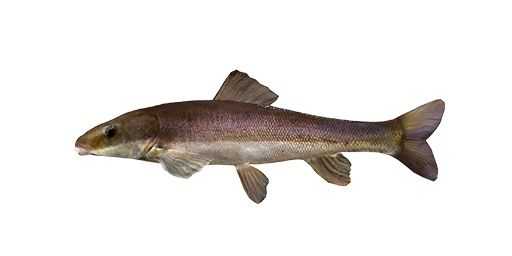Longnose Sucker

Species Details
Catostomus Catostomus
Catostomidae
Cypriniformes
Rivers, Streams, Lakes
1 - 6 lbs.
8" - 25"
About the Longnose Sucker (Catostomus catostomus)
The longnose sucker is a bottom-feeder, often dwelling in shallow water. They have 9-12 rays in their dorsal fin, around 7 anal soft rays, and greater than 15 scales above the lateral line. They are similar in appearance to White Suckers, except they have tan-olive or black sides with cream-white underbellies and a longer snout that extends past their upper lip.
They have a cylindrical body, forked tails with curved lobes, and a long snout. Their large lips have papillae located on the bottom of their jaw, which helps suck up their food when feeding. They have no teeth in their mouths but have pharyngeal teeth located near the digestive tract.
Longnose suckers fish prefer clean, cool streams and rivers with gravel bottoms, although they are occasionally found in deeper waters of lakes. Their diet consists of algae, midge larvae, fish eggs, and most aquatic invertebrates in the benthic zone.
The longnose sucker is prone to predators since they gather in large numbers during spawning. They are not highly prized for human consumption, since their white flesh is bony and are more often used for bait and dog food.
Interesting facts about the Longnose Sucker
- During spawning, adults develop a bright red stripe across the lateral line and horny tubercles on their fins
- It’s the only species of sucker in Alaska
- The longnose sucker has a Weberian apparatus, which are vertebrae linked to their ear and swim bladder that helps sense sound and variations in pressure
Size
The longnose sucker is a small fish and generally measures between 8 to 15 inches long with an average length of 9 to 10 inches and weighs between 1 to 5 pounds. The all-tackle world record weighed in at 6 pounds and 9 ounces. There are a population along the Connecticut River and upper Merrimack River basins that are known as dwarf longnose suckers, which do not generally exceed 10 inches long.
Habitat & Distribution
This freshwater fish favors deep lakes, rivers, and tributary streams that are clear with colder temperatures of around 30 to 60 degrees Fahrenheit.
They are found almost throughout Canada and the United States. Their native range includes the Atlantic and Pacific basins along Canada and Alaska. Specifically, they can be found in the Atlantic slope down south the Delaware River basin in New York, in Maryland and West Virginia, the Missouri River basin south of Nebraska and Colorado, the Monongahela River basin in Maryland and West Virginia, and the Great Lakes basins. They have also been found in the brackish waters of the Arctic drainage in Siberia, Russia.
Lake Koocanusa, a reservoir located in British Columbia and Montana created by the Libby Dam, has been conducive to the growth of the longnose sucker’s population. Crossbreeding between the white sucker has been widely reported along this area.
Longnose suckers typically travel upstream from lakes or slow-moving deep pools toward shallow streams with gravel substrate to spawn, only in the daytime usually between April and July. The males will rise from the bottom to follow the female as she moves towards the center of the stream, and when the eggs are released, the males will attach to the female and vibrate together to simultaneously release eggs and sperm. Females can produce up to 60,000 eggs that will hatch in around one to two weeks.
Longnose suckers generally spawn every year, and those that naturally reside in the river will usually stay in the area for the remainder of summer months, while those that migrated will return to where they came from.
Longnose Sucker - Fishing Techniques
The longnose sucker is not considered a gamefish, and some anglers generally do not favor them other than for use as bait.
Anglers will typically want to focus on smaller rivers with a decent current, and the river’s mouth can have a good number of suckers to fish for. Fishing them doesn’t require much effort, but rather, patience and heightened observation skills.
A 6 to 7 foot medium to heavy spinning rod with a 14-pound line, 1/0 to 3/0 bait hooks, and 0.5 to 2-ounce sinkers will work, which is a similar tackle for catfish. Make the hook line longer than the sinker line, and use regular worms as bait when fishing. You simply need to set out your line, let the bait rest stationary on the bed’s bottom, and wait for the suckers to bite. When using worms as bait, be prepared to reel in other fish. However, going to a known spawning ground of suckers makes your chances increase. You should make your line tight so that the slightest movement will be noticeable, otherwise, the suckers will grab the bait stealthily.







